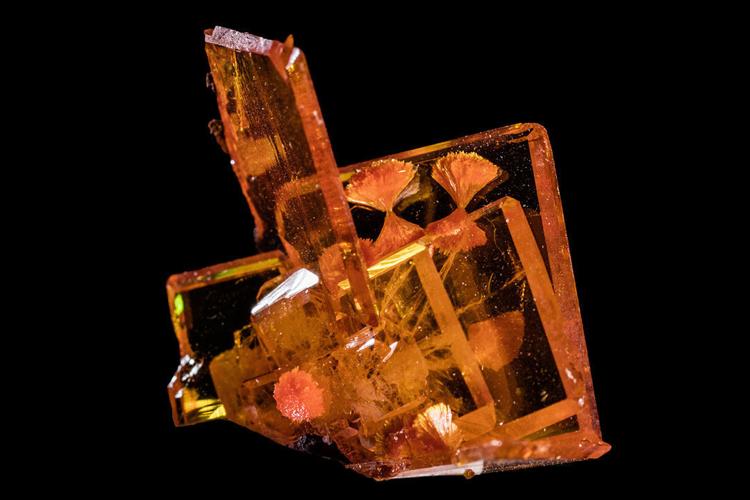Mining activity in the Painted Rocks Mountains, about 28 miles northwest of Gila Bend, became prevalent in the early 1900s.
Rowley Mine, located about 800 feet up the west slope of a mountain within the Painted Rock Mining District, is best known for its spectacular wulfenite specimens.
Geologic history consists of andesite and rhyolite flows dating back to the Tertiary Period more than 30 million years ago, since overlain by basalt. Old assays revealed the property was first mined for copper, lead and gold.
A small mining camp with a bunk house, boarding house, cottages, tents and power houses was erected on site that was operated by the Rowley Copper Mines Co., which was incorporated in 1909.
Water from below the surface proved challenging. Cornish pumps operating 16 hours a day and raising 200 gallons of water per minute were required to prevent the workings from being flooded.
By 1922, the Reliance Copper Co. assumed control of the mine. Its tenure was brief, as mining operations were suspended and the property foreclosed. Diamond drilling the following year showed no improvement in ore values at a depth of 360 feet, other than core samples revealing copper staining. A second drill hole at 290 feet revealed no improved ore grade.
Though sometimes referred to as the “Rawley Mine”, the Rowley Mine was named for Charles A. Rowley, who acquired the property as majority owner in 1927. As president of Rowley Mines, Inc., Rowley was very protective of his mine. He employed a night watchman at the site and also sealed off the area with a 6-foot barbed-wire fence embedded in the ground with concrete.
By 1933, the Rowley Mine comprised more than 1,462 feet of workings, including one 225-foot inclined shaft and another reaching 150 feet. A vertical shaft at 280 feet deep included several hundred feet of drifts and crosscuts at the 160-foot level. That year, a recorded $10,000 worth of ore was shipped to market. Increased flooding by groundwater seepage hindered further expansion.
During the 1950s, the underground workings were extensively mapped and the geology observed.
A 1971 report stated that a fire started by vandals destroyed the timbering in the incline shaft, making underground mineral collecting even more formidable.
In 1983, mineral dealer Dave Shannon, who had an interest in optioning the mine, reported foot-thick slabs of galena composed of 45 ounces of silver per ton as barred down from a hanging wall of the Rowley Mine.
Wulfenite, a lead molybdate, is perhaps the best-known mineral found at the Rowley Mine.
Early crystals were described as being deep orange with brilliant luster. Some took on the appearance of the dark red crystals similar to those at the Red Cloud Mine, while others had characteristics of symmetric octagonal crystals and square reddish crystals, which have diamond-shaped patterns inscribed on their faces.
Atop the crystals are blood-red balls of crystallized mimetite, a lead chlorarsenate that’s also a favorite among mineral collectors.
Flooding has now made the lower levels of the mine inaccessible, causing the older collected specimens to sell at a high price.
Many mineral specimens from the mine have a barite matrix. Barite has the appearance of gray-to-white blades, and is the dominant gangue material heavily stained with iron oxide.
The ore body at the Rowley Mine consists of fractured barite, which historically caused instability for underground miners, even when the timbers were first erected. This has been a reason for extreme caution among miners and mineral collectors that have worked or collected at the mine in the past.
Other lead-copper minerals, some rare, have been found at the Rowley Mine. Those include diaboleite, minium, leadhillite, linarite caledonite and phosgenite. One stope at the Rowley Mine was christened the “blue room” because of its chrysocolla lined walls.
Mineral collecting on the surface dumps of the Rowley Mine, with permission of the lease holders, has yielded micromount specimens with some thumbnail-sized crystallizations.





